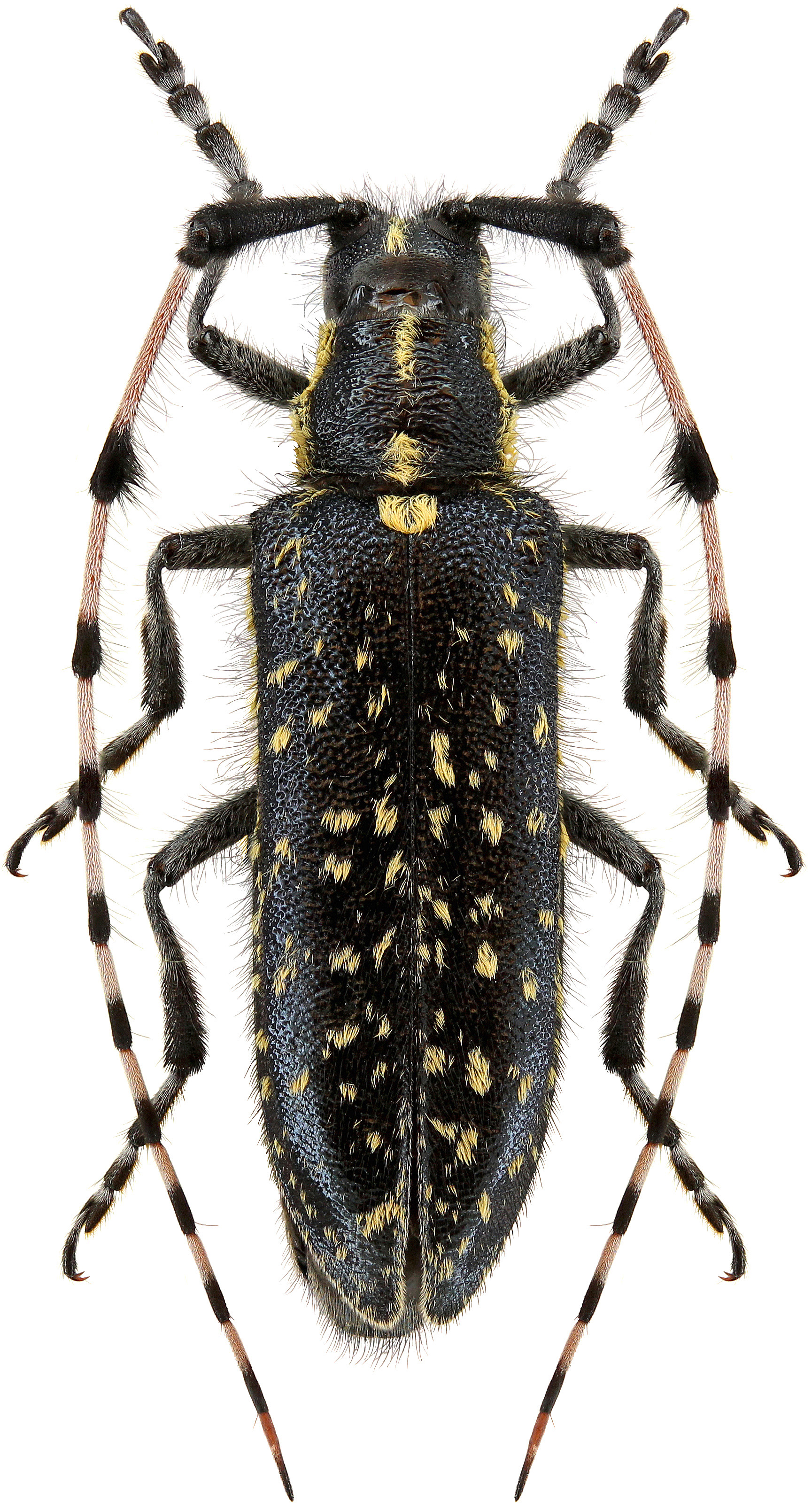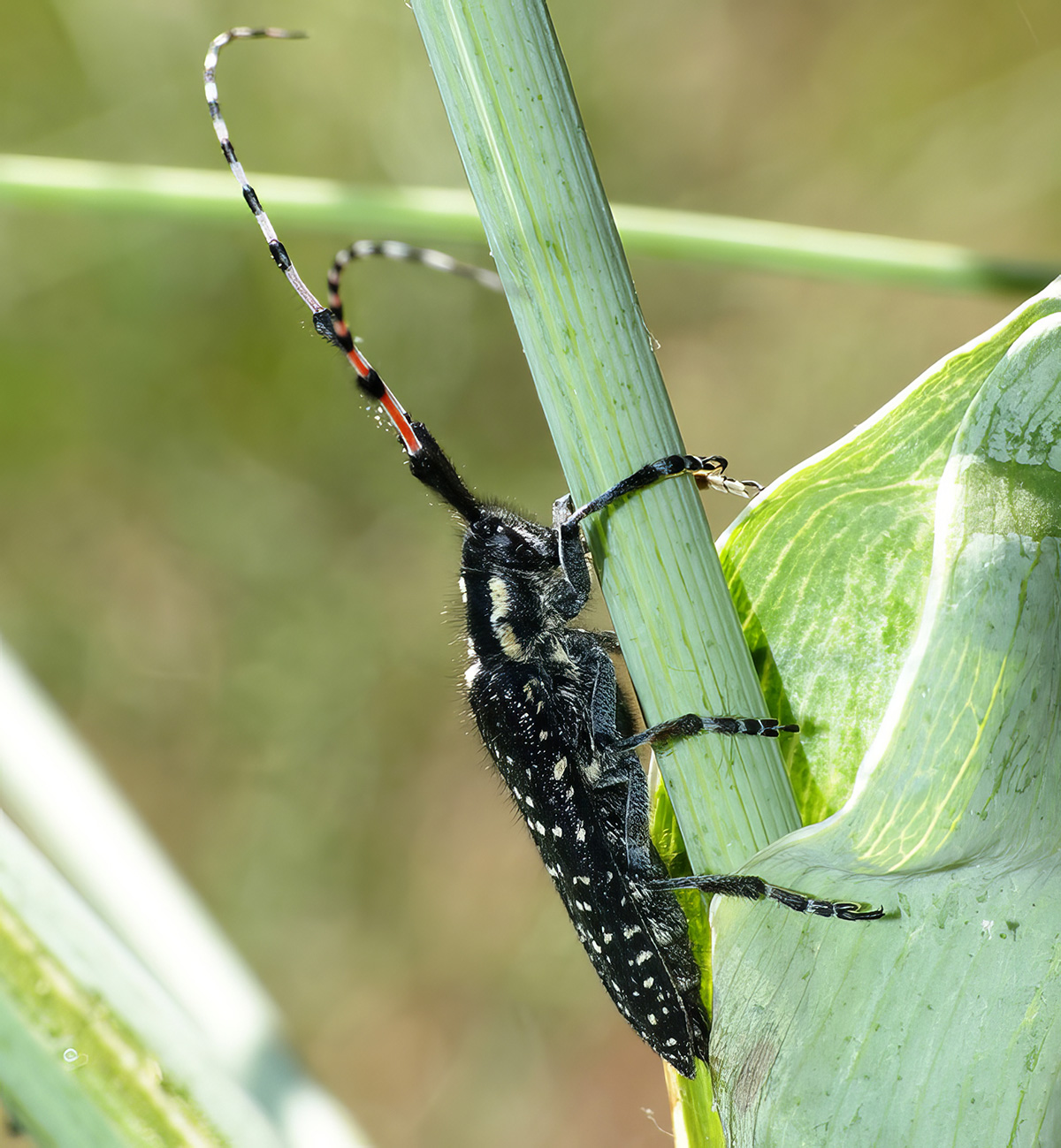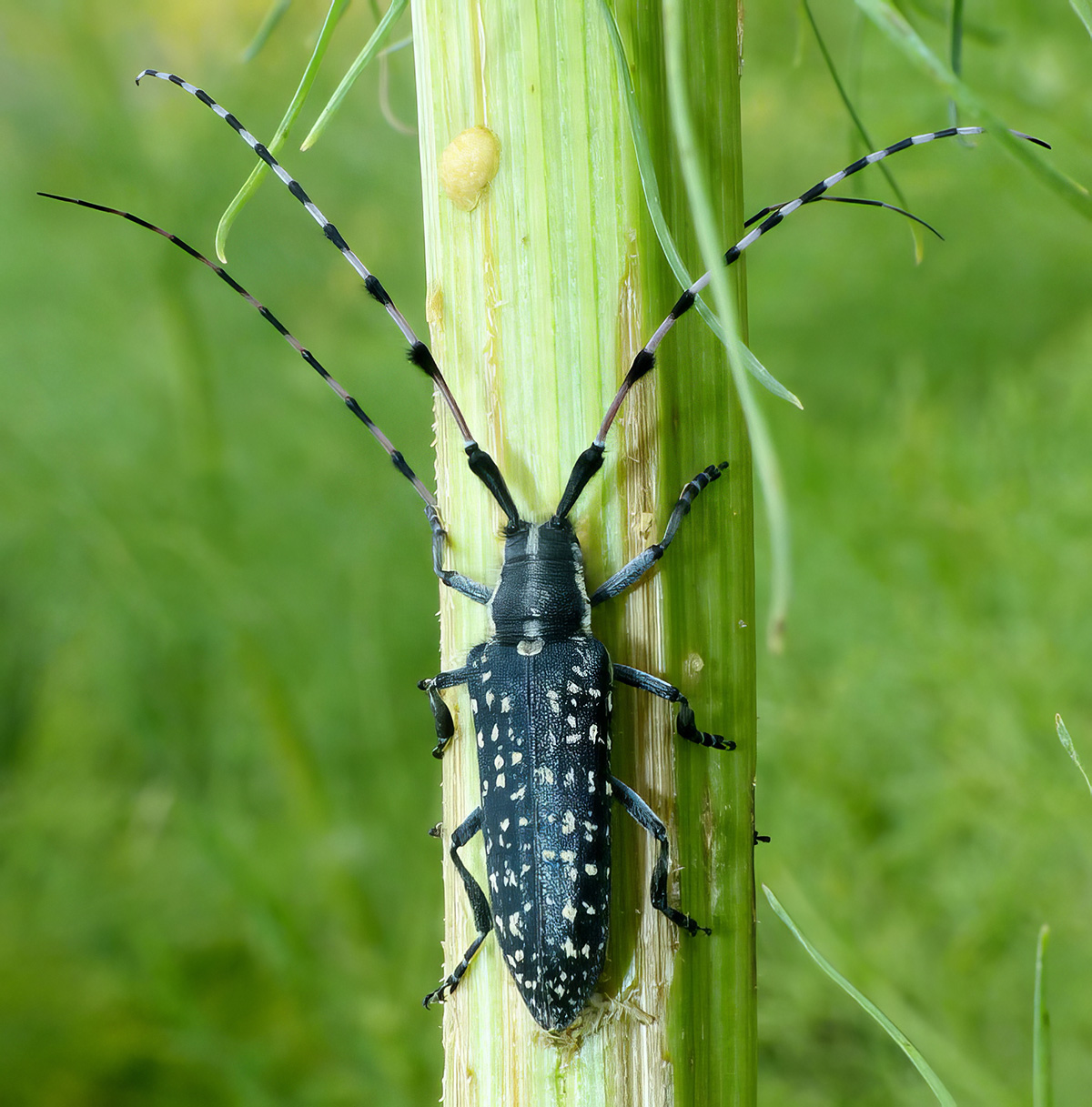Agapanthia soror, a remarkable species from subgenus Stichodera occuring in Central Asia (Afghanistan, Kazakhstan, Kyrgyzistan, Tajikistan, Uzbekistan), has been described from
Samarkand environs by Gustav Kraatz in 1882 [▽]. A. soror inhabits montane habitats in at altitudes of between 1000 and 3000 m above the sea level. Its larvae feed on the stems
and rhizomes of Prangos spp. The females lay eggs in the incisions in the Prangos stems, hatched larvae feed in the core of the stems where they move towards the roots. Mature
larvae create pupal cells, overwinter in the basal stem parts (or upper parts of roots) and pupate in the following spring. Adults, active from May to ed of July, can be found on the host plants,
where they copulate and supplementary feed during summer [❖].
| Body length: | 11 - 22 mm |
| Life cycle: | 1 year |
| Adults in: | April - June |
| Host plant: | Prangos spp. (Apiaceae) |
| Distribution: | Kazakhstan, Uzbekistan |
The depicted beetle was collected on the right side of the Bolshaya Almatinka (Большая Алматинка/Үлкен Алматы) river
(N43°07′58″ E76°54′50″; 1500 m a.s.l., Trans-Ili Alatau, Almaty Region, Kazakhstan)
on May 23, 2013. The living beetles have been photographed on the host plant (Prangos) in Berkar (630 m a.s.l., Karatau Mts., South Kazakhstan) on May 23, 2016.
Collected by Sergey V. Kolov and Karel Hodek
[▽]
Heyden L.F. and Kraatz G.:
Käfer um Samarkand, gesammelt von Haberhauer.
Deutsche entomologische Zeitschrift, Berlin 26 (2): 297-338, 1882.
[download  ]
]
[❖]
Kadyrov A.K., Karpiński L., Szczepański W. T., Taszakowski A. & Walczak M.:
New data on distribution, biology, and ecology of longhorn beetles from the area of west Tajikistan (Coleoptera, Cerambycidae).
ZooKeys 606: 41-64, 2016.
[download  ]
]




